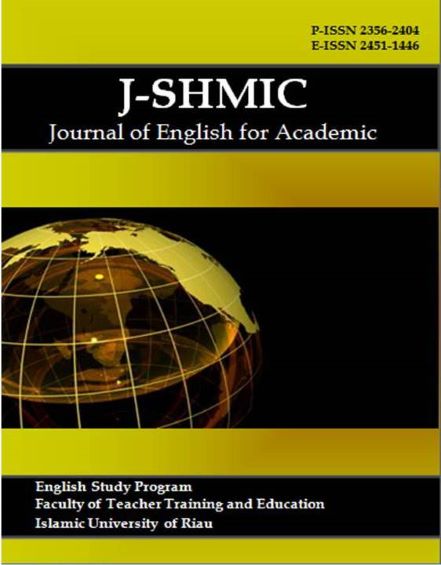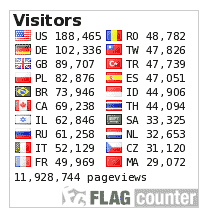Portfolio-Based Assessment in English Language Learning: Highlighting the Students’ Perceptions
Keywords:
Assessment, Portfolio-Based Assessment, EFL Students’ PerceptionsAbstract
Portfolio-based Assessment (hereafter, PBA) plays an indispensable role in language assessment. PBA represents the development of the students’ learning process outcomes, trains autonomous learning, and stimulates metacognitive awareness. Conversely, a few investigative attempts, addressed the students’ perceptions of PBA in the Indonesian EFL Context. Therefore, this study aimed to decipher the perceptions of EFL students in Indonesia on PBA use in the English subject. Empirically speaking, two female students were involved as the participants in this study. The data were collected through a semi-structured interview and analyzed with Thematic Analysis (TA) (Braun & Clarke, 2006). The findings revealed that students articulated their perceptions in three major themes, namely developing self-monitoring from the students’ learning processes, generating discipline, responsible and autonomous language learning attitudes, and mitigating perceptual mismatches among teachers and students. Pedagogically speaking, this study indicates that PBA employment can provide opportunities for students to monitor their learning progress, and enhance their self-confidence and learning motivation.
Downloads
References
Adams, W., C. (2015). Conducting Semi-Structured Interviews. Handbook of Practical Program Evaluation, pp. 492-505.
Amstrong, C., L. (2011). Understanding and Improving the Use of Writing Portfolios in One French Immersion Classroom. Ontario Action Researcher.
Arter, J.A. (1989). Assessing Communication Competence in Speaking and Listening: a consumer’s guide. Portland. OR: Northwest Regional Educational Laboratory.
Bataineh, R., B. & Obeiah, S., F. (2016). The Effect of Scaffolding and Portfolio Assessment on Jordanian EFL Students’ Writing. Indonesian Journal of Applied Linguistics, 6(1), pp. 12-19.
Black, P., & William, D. (1998). Assessment and Classroom Learning. Assessment in Education: Principles, Policy, and Practice. 5(1). 7-74.
Boyatzis, Richard, E. (1998). Transforming Qualitative Information: Thematic Analysis and Code Development. Thousand Oaks: Sage pub.
Braun, V., & Clarke, V. (2006). Using thematic analysis in psychology. Qualitative Research in Psychology, 3(2). pp. 77-101.
Brown, J. D., & Hudson, T. (1998). The Alternatives in Language Assessment. TESOL Quarterly, 32(4), 653.
Carless, D. (2011). From Testing to Productive Student Learning: Implementing Formative Assessment in Confucian-heritage Settings. New York: Routledge.
Castillo-Montoya, M. (2016). Preparing for Interview Research: The Interview Protocol Refinement Framework. The Qualitative Report, 21(5), 811-831.
Cheng, L., & Fox, J. (2017). Assessment in the Language Classroom. Applied Linguistics for the Language Classroom. Kirby Street, London: PALGRAVE.
Cohen. (2006). Semi-structured interview. Robert Wood Johnson Foundation. Retrieved from: http://www.qualres.org/HomeSemi-3629.html
Farahian, M., & Avarzamani, F. (2018). The Impact of Portfolio on EFL Students’ Metacognition and Writing Performance. Cogent Education, 5(1).
Hamp-Lyons, L. (2001). Fourth Generation Writing Assessment.
Harosid, H. (2019). Kurikulum 2013 Revisi 2017. Retrieved from https://dosen.ikipsiliwangi.ac.id/GAMBARAN-UMUM-K13-REVISI-2017-1.pdf
Harrel, M., C. & Bradley, M., A. (2012). Data Collection Methods: Semi-Structured Interviews and Focus Groups. Arlington, VA: RAND Corporation
Joshi, M. K., Gupta, P., & Singh, T., (2015). Portfolio-based Learning and Assessment.
Lam, R. (2014). “Promoting Self-regulated Learning through Portfolio Assessment: Testimony and Recommendations”. Assessment & Evaluation in Higher Education. 39(6), 699–714.
Lam, R. (2015). Assessment as learning: Examining a Cycle of Teaching, Learning, and Assessment of Writing in The Portfolio-Based Classroom. Studies in Higher Education.
Liu, Y. (2003). A case study of selected ESL students’ experiences with writing portfolios in college composition courses. Unpublished doctoral dissertation, Ohio State University.
Marks, D., & Yardley, L. (2004). Research Methods for Clinical and Health Psychology. In Ibrahim, M., & Alhojailan. (2012) Thematic Analysis: A Critical Review of Its Process and Evaluation. West East Journal of Social Sciences, 1(1).
Meihami, H., Husseini, F., & Sahragard, R. (2019). Portfolio-based Writing Instruction as a Venue to Provide Corrective Feedback on EFL Learners’ Writing Performance. Journal of Modern Research in English Language Studies. 5(3), 132.
Murat, H., & Sibel, H. (2010). The European language portfolio in ESP classes: a case study of learner reflection and self-assessment. European Journal of Social Science. 12(4).
Nezakatgoo. B. (2011) Portfolio as a Viable Alternative in Writing Assessment. Journal of Language Teaching and Research, 2(4), 747-756. https://doi.org/10.4304/jltr.2.4.747-756
Ozer, O. & Tanrıseven, I. (2016). The Effect of Portfolio-based Assessment on the Development of Writing Skills of EFL Students. International Online Journal of Educational Sciences, 8 (3), 35-45.
Pettis, J. (2014). Portfolio-Based Language Assessment (PBLA): Guide for teachers and programs. Ottawa: Centre for Canadian Language Benchmarks.
Qiong, O. (2017). A Brief Introduction to Perception. Studies in Literature and Language. 15(4), 18-28.
Sidebotham, M., Baird., K., Walters, C., & Gamble, J. (2018). Preparing Student Midwives for Professional Practice: Evaluation of a Student E-Portfolio Assessment Item. Midwifery Education in Practice, 32, 84-89.
Swicegood, P. (1994). Portfolio-based Assessment Practices. 30(1), 6-15. Retrieved from http://isc.sagepub.com
Walgito, B. (1991). Pengantar Psikologi Umum. Yogyakarta:Andi.
Published
How to Cite
Issue
Section
This is an open-access article distributed under the terms of the Creative Commons Attribution-ShareAlike 4.0 International License which permits unrestricted use, distribution, and reproduction in any medium. Users are allowed to read, download, copy, distribute, search, or link to full-text articles in this journal without asking by giving appropriate credit, providing a link to the license, and indicating if changes were made. All of the remixes, transform, or build upon the material must distribute the contributions under the same license as the original.











